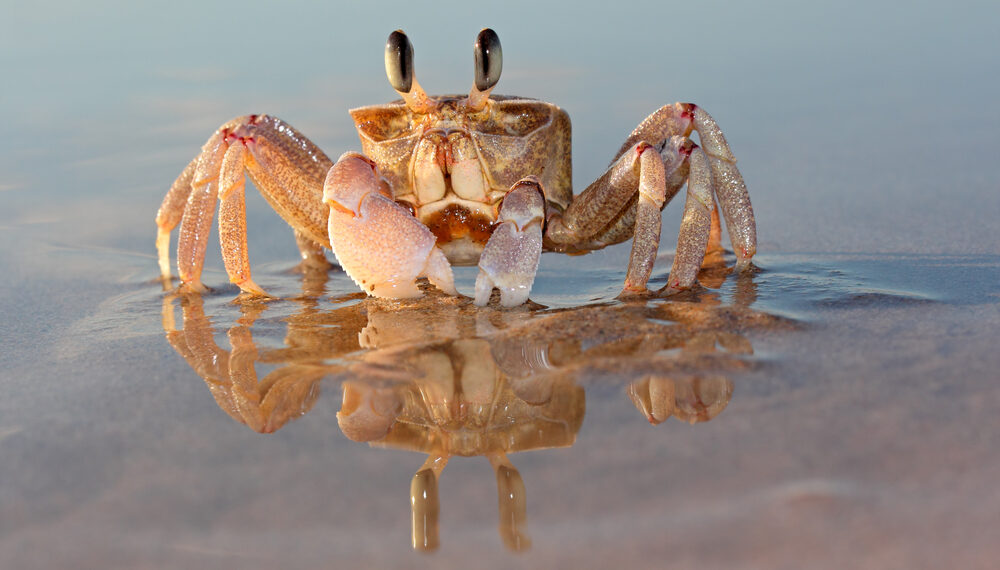Ghost crabs, also known as sand crabs, are small crabs that live in sandy beaches and intertidal zones. They are known for their unique ability to “growl” at predators, which is created by the movement of teeth within their stomachs.
The stomach of a ghost crab is lined with small teeth-like structures called gastroliths, which are used to grind up and digest food. These teeth are made of calcium carbonate, the same material that makes up seashells. As the crab moves its stomach muscles to grind up food, the gastroliths make a rasping or growling sound.
This growling behavior is thought to serve as a warning to potential predators. The sound may indicate to the predator that the ghost crab is a tough and formidable opponent, which may deter the predator from attacking. Additionally, since ghost crabs spend a lot of time buried in the sand, the growling may help to intimidate predators that might be trying to locate them.
The growling behavior has also been observed in other species of crabs, such as hermit crabs. It is not entirely clear how the growling behavior evolved in these crabs, but it is likely that it provides some sort of selective advantage.
In addition to growling, ghost crabs have several other adaptations that help them survive in their environment. Their transparent eyes can rotate 360 degrees, allowing them to keep an eye out for predators at all times. They also have large claws that they can use to defend themselves. They also use their claws to dig burrows in the sand to hide in when they sense danger.
In addition to using their gastroliths to growl at predators, ghost crabs also use them for a variety of other functions. One of the main functions of gastroliths is to aid in the digestion of food. The gastroliths help to grind up and crush food particles, making it easier for the crab’s digestive enzymes to break down the food. This is particularly useful for ghost crabs, as they have a diet that consists mainly of hard-shelled organisms, such as mollusks and crustaceans.
Another important function of gastroliths is to regulate the crab’s buoyancy. Ghost crabs are able to control the amount of gastroliths in their stomachs, which allows them to adjust their density and float at different depths in the water. This adaptation is crucial for ghost crabs as they inhabit the intertidal zone, where the water level can change dramatically with the tide.
Gastroliths also play a role in the crab’s reproduction. Males will store sperm in their gastroliths, which they will later transfer to the females during mating. This allows the males to store sperm for long periods of time, increasing their chances of reproducing. Furthermore, Gastroliths also involved in the process of molting, these teeth-like structures help in hardening the new exoskeleton, this process would not be possible without them.
Ghost crabs are also known for their unique social behavior. They live in large communities and communicate with each other using various forms of signaling. Gastroliths play an important role in this communication. The growling sound that they produce can be used to communicate with other ghost crabs, signaling the presence of food, danger, or potential mating partners.
In conclusion, ghost crabs use gastroliths for a variety of purposes beyond just growling at predators. They aid in digestion, buoyancy regulation, reproduction, and communication. The gastroliths are unique adaptations that allow ghost crabs to survive and thrive in their sandy beach and intertidal zone habitats.
It’s also worth mentioning that while Ghost crabs are known to be found in sandy beaches, they are present in different habitats such as mangrove forests and they differ in their behavior and diet. Gastroliths in these other habitats may play a different role in the life of the crab.




